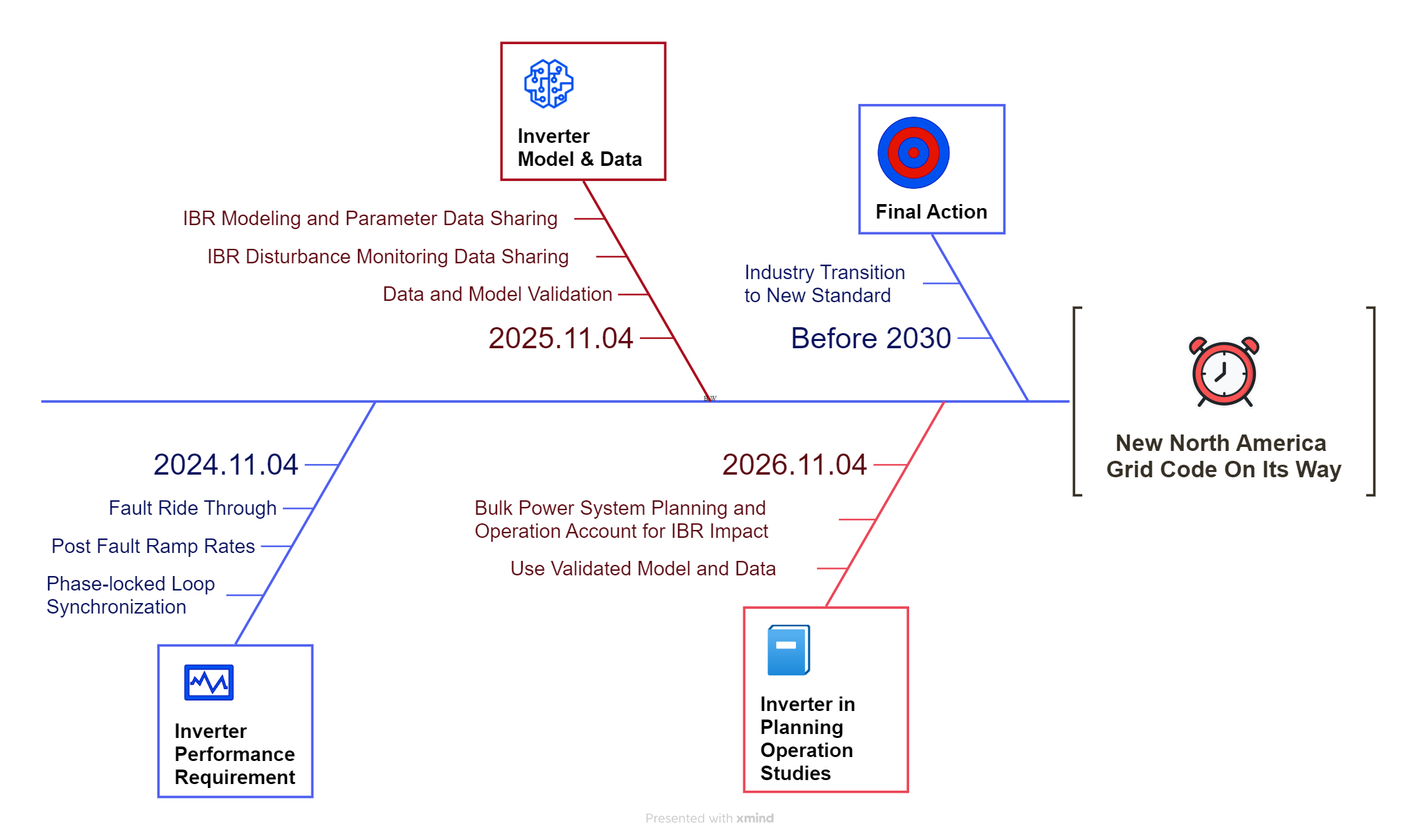FERC Order No. 901
FERC Order No. 901
Figure 1 is my summary of the Federal Energy Regulatory Commission (FERC) Order No. 901. In October 2023, FERC issued Order No. 901 directing the North American Electric Reliability Corporation (NERC), the Commission-certified Electric Reliability Organization (ERO), to develop new or modified Reliability Standards to specifically address reliability gaps associated with inverter-based resources (IBR) – including PV, wind generation, and battery energy storage.

From FERC’s perspective, “the currently effective Reliability Standards do not ensure that Bulk-Power System planners and operators have the necessary tools to plan for and reliably integrate IBRs into the Bulk-Power System”.
As shown in Figure 1, FERC wants all the directed Reliability Standards effective and enforceable well in advance of 2030 ensuring an orderly industry transition for complying with IBR directives in Order No. 901 prior to 2030.
By November 4, 2024, NERC must submit new or modified Reliability Standards that establish IBR performance requirements for IBR frequency and voltage ride through, post-disturbance ramp rates, phase-locked loop synchronization, and other known causes of IBR tripping or momentary cessation. NERC must also submit Reliability Standards that require disturbance monitoring data sharing and post-event performance validation for registered IBRs.
By November 4, 2025, NERC must submit Reliability Standards addressing the interrelated directive concerning: (1) data sharing for registered IBRs, unregistered IBRs, and IBR-DERs in the aggregate; (2) data and model validation for registered IBRs.
By November 4, 2026, NERC must submit Reliability Standards addressing planning and operational studies for registered IBRs.
Current NERC Reliability Standards
As the designated ERO by FERC, NERC was formed and its standards became mandatory and enforceable in the US for the first time on June 18, 2007.
The current Reliability Standards for the Bulk Electric Systems of North America is a document with over 1800 pages. Covering the following topics:
- BAL: Resource and Demand Balancing
- CIP: Critical Infrastructure Protection
- COM: Communications
- EOP: Emergency Preparedness and Operations
- FAC: Facilities Design, Connections, and Maintenance
- INT: Interchange Scheduling and Coordination
- IRO: Interconnection Reliability Operations and Coordination
- MOD: Modeling, Data, and Analysis
- NUC: Nuclear
- PER: Personnel Performance, Training, and Qualifications
- PRC: Protection and Control
- TOP: Transmission Operations
- TPL: Transmission Planning
- VAR: Voltage and Reactive
My Thoughts
After reading the Order, I feel that FERC is very anxious about IBR’s impact on North American BPS. FERC wants no more IBR tripping (momentary cessation). The try-and-error method of operating IBRs in the grid starts reaching its limit while the grid is retiring synchronous generators. I am well aware of IEEE-1547 and IBR control and stability analysis, however, I was shocked that in the past decade, our grid has been planned and operated without using IBR data and models. For a power electronics engineer, it’s like controlling your converter with a feedback loop’s PI parameters set by guessing. Now, we need to study the system carefully to derive our plant transfer function (model) validate it with measurement and design the system with a good amount of stability margin! However, the power system is more complicated than a single converter!